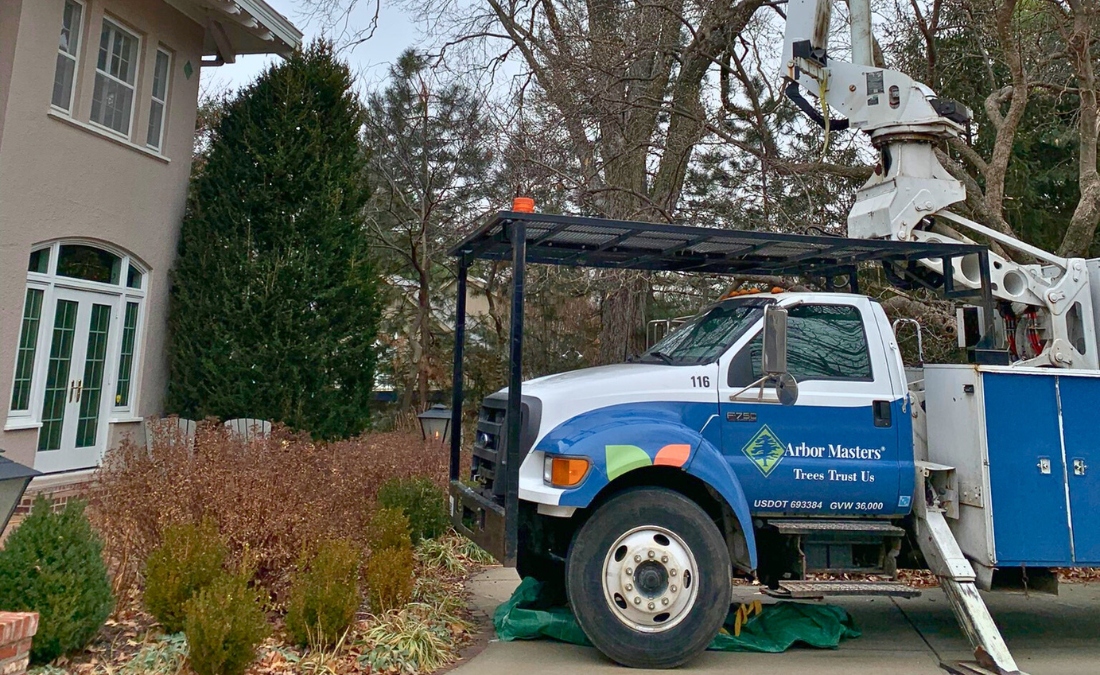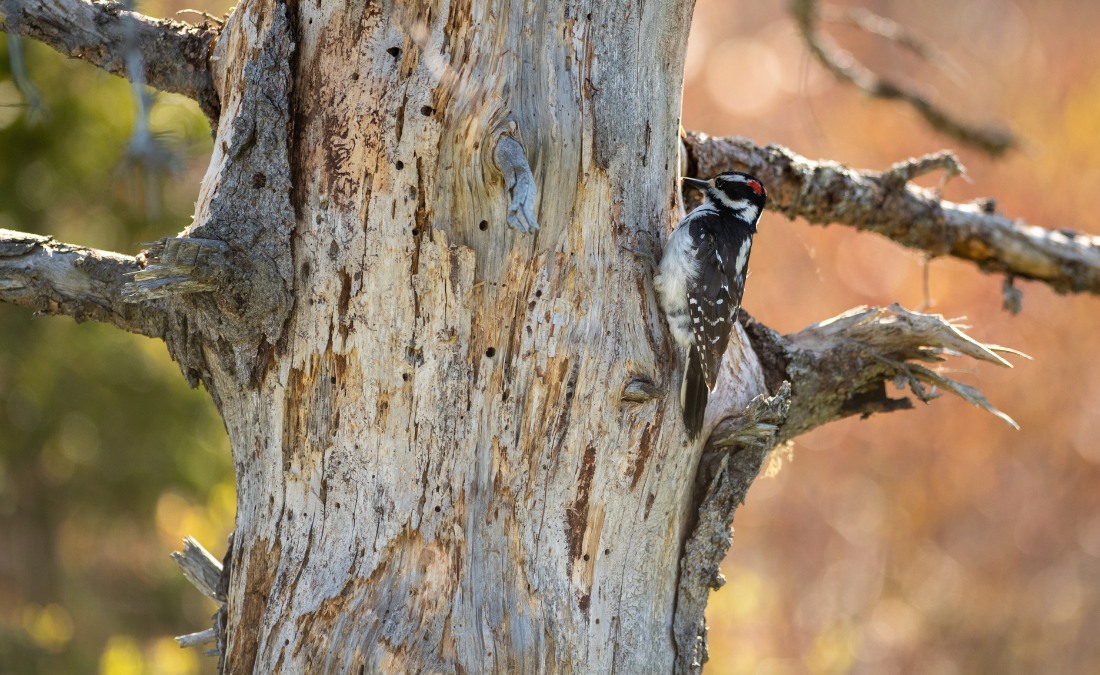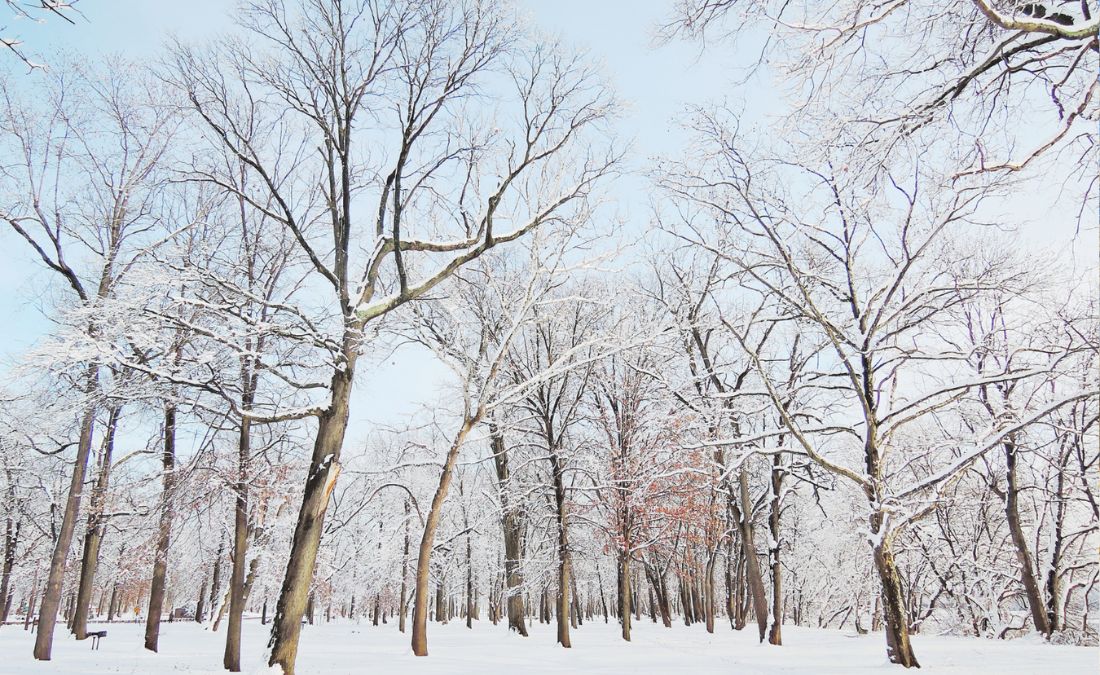Essential Winter Tree Services for Homeowners in Lee’s Summit: Risk Assessment, Removal & Plant Health Care
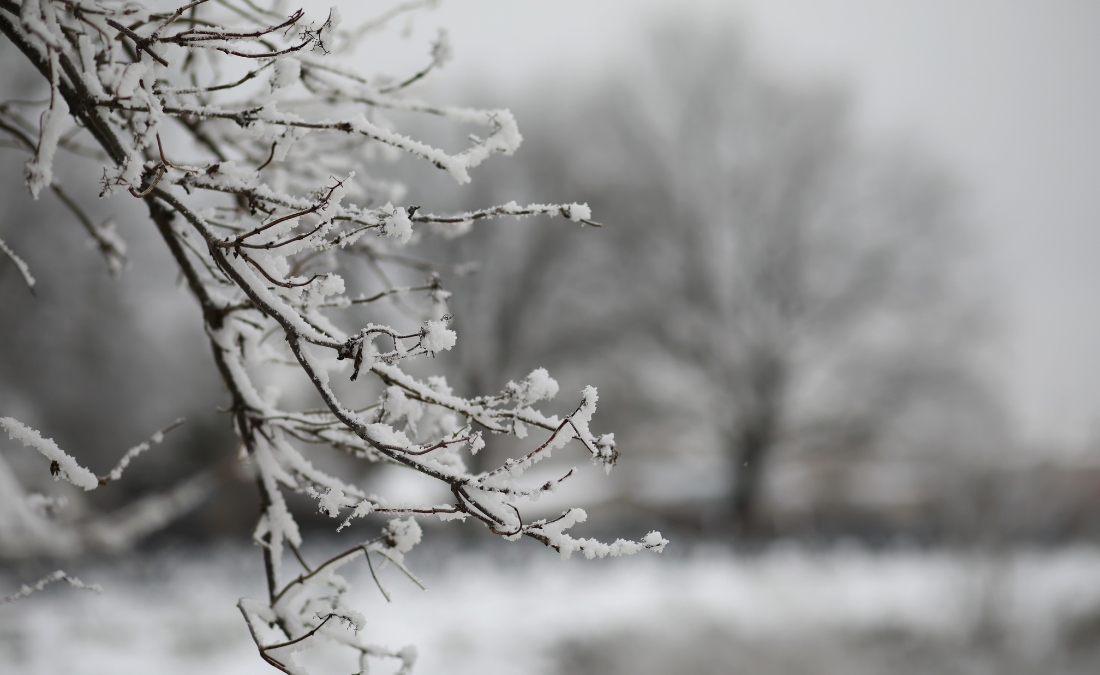
Don't let winter storms destroy your trees! Learn which essential winter tree services keep properties in Lee’s Summit safe, strong, and storm-ready.
Last winter’s ice storms caught thousands of KC Metro homeowners off guard, leaving behind costly damage that proper winter tree services could’ve prevented. While you’re planning your holiday decorations and winter preparations, your trees are quietly revealing secrets that summer foliage kept hidden. Those beautiful, leafy canopies that define neighborhoods, like Mission Hills and Overland Park, often conceal serious structural problems that become dangerous hazards when winter storms arrive.
The dormant season presents a critical opportunity that smart homeowners throughout the Kansas City Metro are learning to embrace. Winter’s bare branches reveal exactly what professional Certified Arborists need to see to keep your property safe while setting your trees up for their healthiest, most resilient growing season yet.
Key Takeaways
- Schedule tree risk evaluations before December storms hit.
- Take advantage of frozen ground conditions that allow safe access for large removals in established neighborhoods, like Lee’s Summit and Blue Springs, without lawn damage.
- Complete winter fertilization and disease prevention treatments by January to ensure spring success across the Kansas City Metro area.
- Combine multiple winter services to reduce overall project costs while maximizing tree health benefits for the growing season.
- Address trees near structures immediately before ice storm season peaks in December and January.
What Are the Most Essential Winter Tree Services Homeowners Need?
Winter tree care in the Kansas City Metro centers around three distinct services: tree risk assessments, tree removals, and plant health care – each with specific timing requirements that determine your property’s safety and your trees’ health for the entire year ahead.
Understanding the urgency levels of these services helps you prioritize your investment and schedule work at the most beneficial times. Some services demand immediate attention, while others offer flexibility throughout the winter months; that’s why it’s so important to work with a team of professionals who can help you plan accordingly:
- Tree Risk Assessments (Critical Timing): Risk assessments require the most urgent attention, with optimal timing between November and early December before major storms arrive.
- Winter Tree Removal (Flexible Throughout Season): Tree removal can be scheduled anytime during dormancy but offers the greatest advantages during deep winter when ground conditions are most favorable.
- Plant Health Care Treatments (Strategic Winter Application): PHC treatments work best when applied during specific windows within the dormant season to maximize spring benefits.
Why Is Winter the Best Time for Tree Risk Assessments Throughout Kansas City?
Tree risk assessments become dramatically more effective during winter months when deciduous trees lose their foliage. What appears as a healthy tree canopy in summer can hide serious structural defects that become clearly visible once leaves drop.
Without leaves obscuring the view, experienced Certified Arborists can identify critical issues, including:
- Cracked trunks and major branch attachments
- Previous storm damage that’s been hidden
- Weak branch unions and structural defects
- Dead branches that pose immediate hazards
- Root problems affecting tree stability
This visibility advantage is particularly important for properties in established neighborhoods, like Mission Hills, where mature trees often add significant curb appeal and have complex branching structures developed over decades.
Signs Your Kansas City Tree Needs Emergency Winter Assessment
Certain warning signs indicate immediate professional evaluation is needed before winter storms arrive:
- Visible changes in tree lean or posture
- Hanging branches or partially detached limbs
- Trunk damage, cracks, or fungal growth
- Recent root disturbance from construction
- Any structural concerns near homes, driveways, or power lines
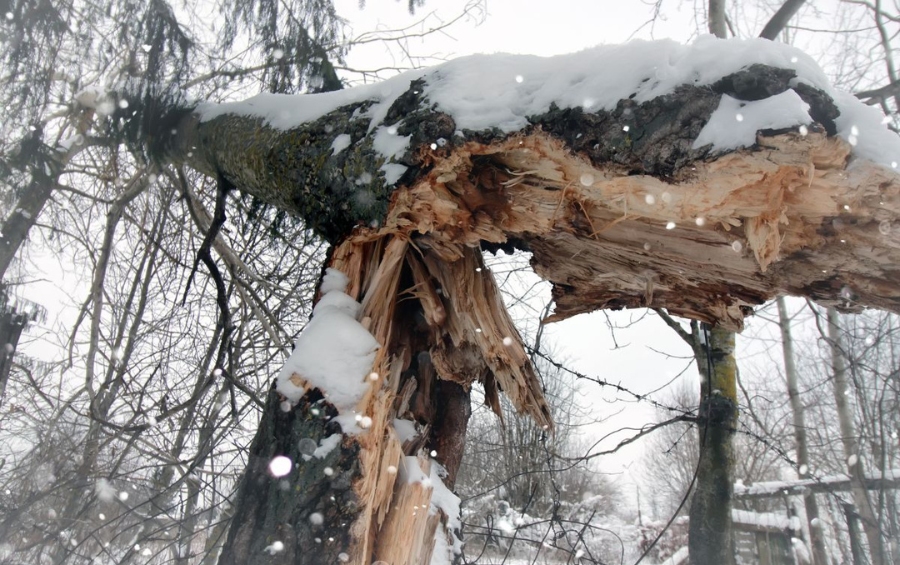
Which Trees Need Priority Assessment Before Winter Storms
Focus assessment efforts on high-risk situations that pose the greatest threat to safety and property:
- Trees over 15 feet tall near structures or high-traffic areas
- Species showing recent damage or decline
- Ash trees affected by emerald ash borer
- Trees with previous storm damage or drought stress
- Any tree with visible structural concerns or lean
Expert Insight: “Winter is ideal for more than just pruning. It can be the best time for large tree removals and bigger projects, too. Dormant trees often respond better to pruning, and frozen or snow-covered ground means we can bring in equipment with minimal impact to your lawn and landscape. Winter work sets your property up for success next spring.” Stephen Carlson, Director of Sales at Arbor Masters
When Should You Schedule Tree Removal During Winter Months?
Winter tree removal offers significant advantages over warm-season removal, making it the preferred timing for most non-emergency situations. The dormant state reduces stress on surrounding vegetation, while frozen ground conditions allow heavy equipment access without lawn damage.
What Makes Winter Tree Removal Safer and More Effective?
Several factors combine to make winter the optimal season for tree removal projects:
- Absence of leaves improves visibility for climbing arborists
- Lower branch weight makes removal safer and more controlled
- Frozen ground protects lawns and landscaping from equipment damage
- Dormant trees pose minimal disease transmission risk to healthy specimens
How Frozen Ground Benefits Large Tree Removal Projects
Frozen ground acts as natural protection for lawns and landscaping during heavy equipment operation. This benefit proves particularly valuable in established neighborhoods where preserving mature landscaping is essential for property value.
Equipment access advantages during winter include:
- Cranes and bucket trucks can position closer to target trees
- Reduced soil compaction and lawn damage
- Ability to access trees in wet or typically inaccessible areas
- Protection for nearby plants and hardscaping features
Do You Need a Permit for Winter Tree Removal?
Tree removal permits vary by municipality within the Kansas City Metro. Most jurisdictions have specific requirements for removing trees over certain diameters, regardless of season. Here at Arbor Masters, we help guide you through these local permit requirements and ensure compliance with Kansas City tree protection ordinances.
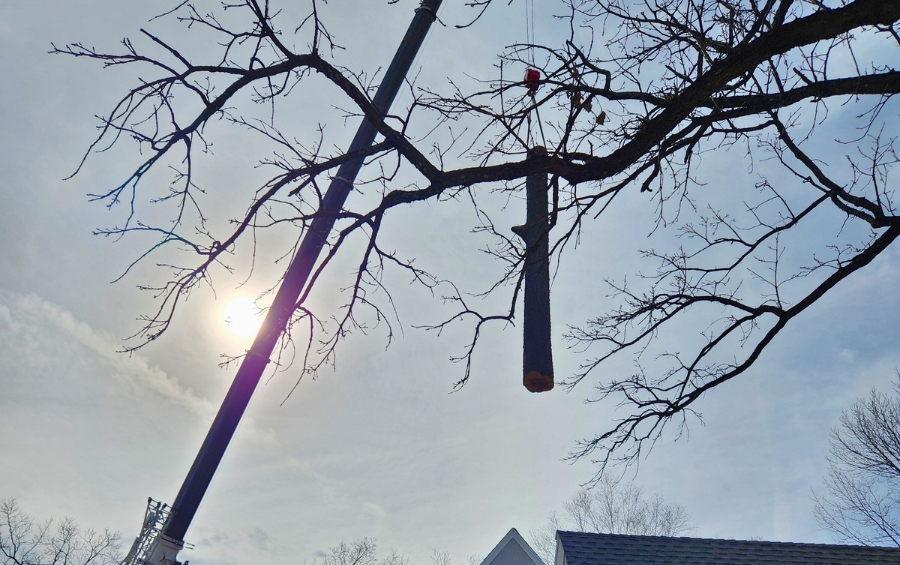
Which Winter Plant Health Care Treatments Protect Kansas City Trees?
Winter plant health care treatments focus on preparing trees for spring growth while addressing dormant-season vulnerabilities. These treatments work best when applied during the tree’s dormant period, allowing maximum nutrient absorption and disease prevention effectiveness.
How Winter Fertilization Prepares Trees for Spring Growth
Winter fertilization takes advantage of dormant root activity that continues even when above-ground growth stops. Deep root fertilization during dormancy allows nutrients to move into root storage before spring growth demands begin.
Key benefits of winter fertilization include:
- Enhanced nutrient storage for spring growth energy
- Improved drought tolerance for the upcoming growing season
- Stronger root system development during dormancy
- Increased resistance to pest and disease pressure
- Better recovery from previous season stress or damage
Optimal Winter Tree Fertilization Schedule for Missouri Climate
The ideal fertilization window extends from November through February, with specific timing providing different benefits for Kansas City trees:
| Timing | Benefits | Best For |
|---|---|---|
| November | Pre-winter nutrient storage | Recently stressed or transplanted trees |
| December-January | Optimal root uptake and storage | Mature trees and established landscapes |
| February | Late-season preparation for spring growth | Trees showing nutrient deficiencies |
What Winter Treatments Prevent Oak Wilt and Other Diseases?
Preventive disease treatments during winter target fungal and bacterial issues that can emerge during spring growth. Winter application of systemic treatments allows thorough distribution throughout the tree’s vascular system before active growing season stress begins.
Critical disease prevention treatments include:
- Systemic fungicide applications for oak wilt prevention
- Bacterial treatment for fire blight susceptible species
- Soil amendment to improve root health and disease resistance
- Pruning wound protection for vulnerable species
Oak wilt prevention requires specific timing, as winter-only pruning recommendations help avoid attracting disease-carrying beetles active from mid-March through mid-July.
Frequently Asked Questions About Winter Tree Services in Kansas City
How long does winter tree fertilization take to show results?
Winter fertilization results become visible in early spring, when treated trees show enhanced leaf color, increased growth, and improved drought tolerance. The full benefits typically appear throughout the first growing season following treatment.
Can winter weather delay scheduled tree services?
Extreme weather conditions, like ice storms or temperatures below 10°F, may require rescheduling for safety reasons. However, most winter tree services can proceed safely in typical winter conditions, including light snow and freezing temperatures.
Should I combine winter tree services with other landscape projects?
Winter tree work coordinates well with dormant season landscape projects like hardscaping, drainage improvements, or garden bed preparation. However, major earthwork should be scheduled to avoid damaging tree root zones.
For Stunning Spring Displays in Eastern KC, Schedule Winter Tree Services with Arbor Masters
Don’t wait for spring emergencies or last-minute costly storm damage. Arbor Masters’ Certified Arborists are ready to assess your trees and provide the winter care they need to thrive.
Schedule a tree risk assessment to kickstart your winter service planning by calling 816-524-3131 or request a free estimate online today.
With over 60 years of experience serving the Kansas City Metro, we provide comprehensive winter tree care throughout Raytown, Lee’s Summit, Blue Springs, Independence, and surrounding Eastern Kansas City areas.
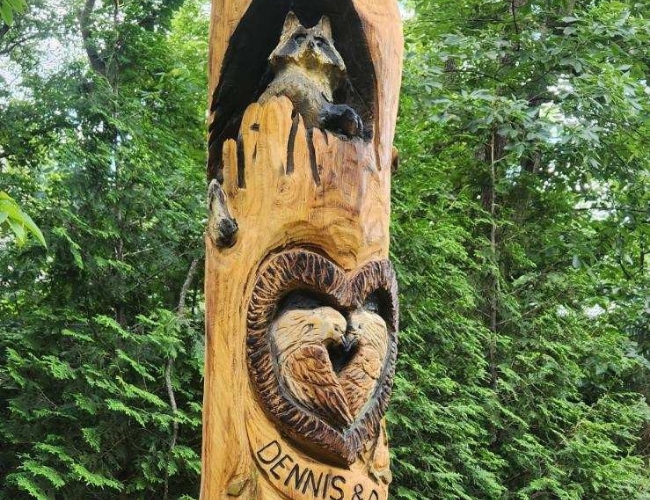
Get the latest local news, tree care tips, special offers, and company updates directly to your inbox! It's easy to subscribe and there's no spam - we promise.
"*" indicates required fields

